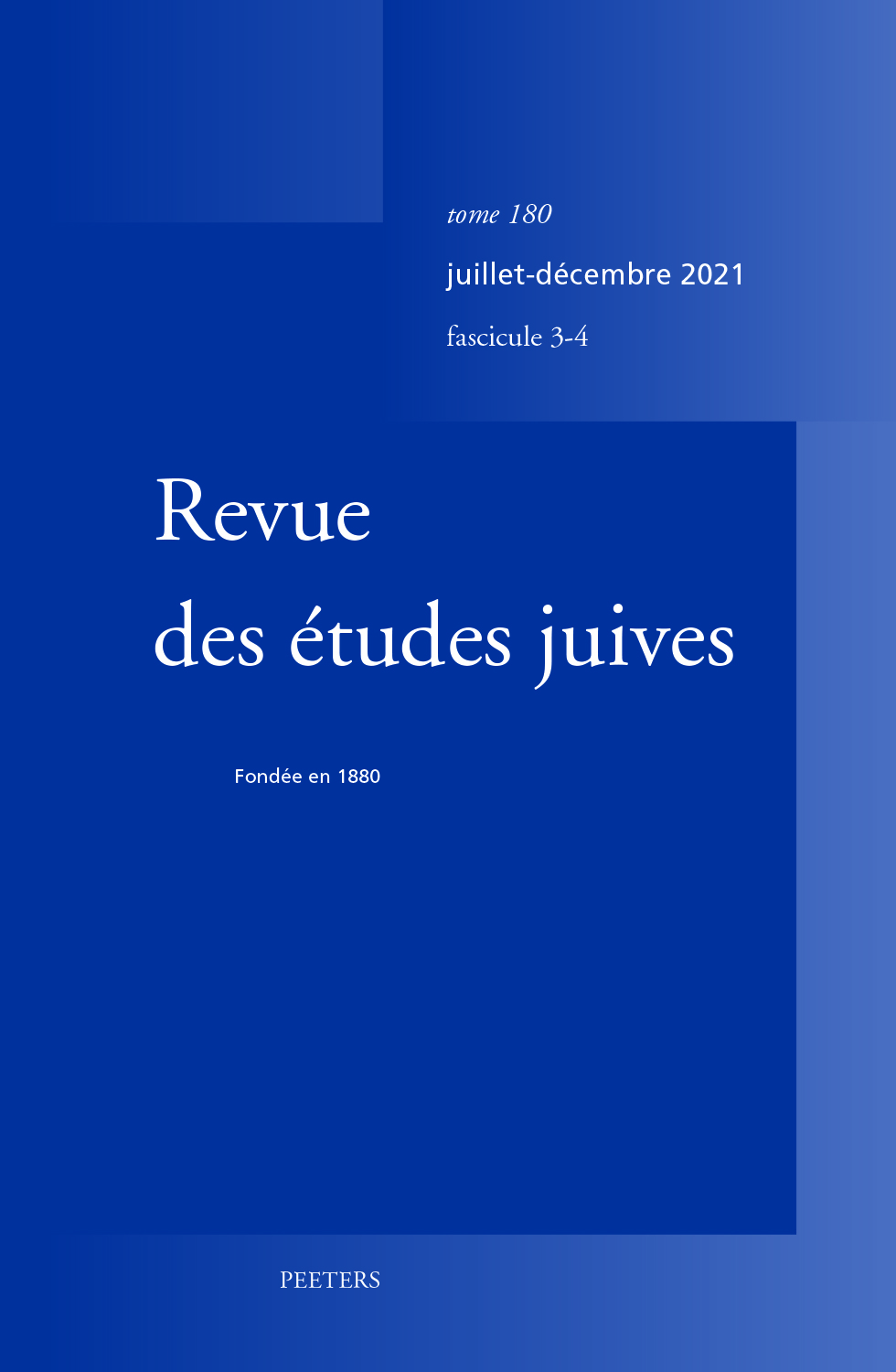 previous article in this issue previous article in this issue | next article in this issue  |

Preview first page |
Document Details : Title: Commissioner, Purpose, Translators, Copyist and Age of the Hebrew New Testament of Cochin and the Qur'ãn of the Library of Congress Author(s): VAN DORT, Mascha Journal: Revue des Études Juives Volume: 182 Issue: 3-4 Date: 2023 Pages: 399-416 DOI: 10.2143/REJ.182.3.3292501 Abstract : In the mid 18th century in Cochin, India, three remarkable manuscripts were produced: a Hebrew translation of the New Testament, Cambridge University Library Manuscripts O0 1.32 and O0 1.16, and a Hebrew translation of the Qur’ān, Library of Congress Hebr. Ms 183. Until now, the purpose of these manuscripts, their commissioners, their dates and the identity of the translators were partially or totally unknown. An analysis of previous research by Franz Delitzsch and Myron M. Weinstein with addition of recent acquired insights about Leopold Immanuel Jacob van Dort and background information from the Tranquebar mission shows that the New Testament and Qur’ān were translated into Hebrew for Ezekiel Rahabi, who needed to better understand trading and diplomatic partners. For the translation of the New Testament both the Luther and Statenvertaling Bible were used as a source, proving that Leopold Immanuel Jacob van Dort contributed greatly to the Hebrew translations of all three manuscripts. And by knowing the dates of van Dort’s visits to Cochin, it is possible to establish the age of the Hebrew New Testament O0 1.32 (1741-1756), O0 1.16 (1757-1760), and the Hebrew Qur’ān (1757-1760). Au milieu du XVIIIe siècle à Cochin, en Inde, trois manuscrits remarquables ont été produits: une traduction hébraïque du Nouveau Testament, Cambridge University Library Manuscripts O0 1.32 et O0 1.16, et une traduction hébraïque du Coran, Library of Congress Hebrew Manuscript 183. Jusqu’à présent, la finalité de ces manuscrits, leurs commanditaires, leur datation et l’identité des traducteurs étaient partiellement ou totalement inconnus. La combinaison de plusieurs sources (les recherches antérieures de Franz Delitzsch et Myron M. Weinstein, des découvertes récentes sur Leopold Immanuel Jacob van Dort et des informations relatives au contexte, issues de la mission Tranquebar) montre que le Nouveau Testament et le Coran ont été traduits en hébreu pour Ezekiel Rahabi afin de lui permettre de mieux comprendre ses partenaires commerciaux et diplomatiques. Pour la traduction du Nouveau Testament, les Bibles de Luther et de Statenvertaling ont été utilisées comme sources, prouvant ainsi que Leopold Immanuel Jacob van Dort a contribué grandement aux traductions hébraïques que contiennent les trois manuscrits. En se fondant sur les dates où van Dort s’est rendu à Cochin, il a été possible de dater le Nouveau Testament hébreu (1741-1756 pour O0 1.32, 1757-1760 pour O0 1.16) et le Coran hébreu (1757-1760). |
|


